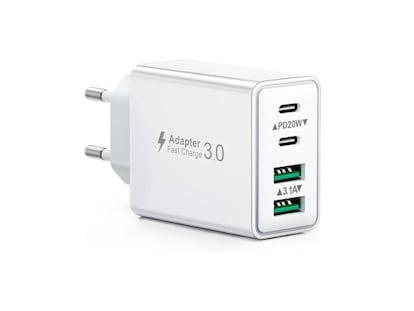Cable sobre la visita a España del secretario adjunto del Departamento de Energía
En 2006 la Embajada en Madrid informa de la visita a España de John Shaw, secretario adjunto del Departamento de Energía, en el que se informa de que este "no se comprometió formalmente a dar financiación"
| ID: | 84732 |
| Date: | 2006-11-07 16:49:00 |
| Origin: | 06MADRID2853 |
| Source: | Embassy Madrid |
| Classification: | UNCLASSIFIED//FOR OFFICIAL USE ONLY |
| Dunno: | |
| Destination: | VZCZCXRO2284 RR RUEHAG RUEHDF RUEHIK RUEHLZ RUEHROV DE RUEHMD #2853/01 3111649 ZNR UUUUU ZZH R 071649Z NOV 06 FM AMEMBASSY MADRID TO RUEHC/SECSTATE WASHDC 1270 INFO RUCNMEM/EU MEMBER STATES COLLECTIVE RUEHKV/AMEMBASSY KYIV 0001 RUEHMJ/AMEMBASSY MAJURO 0001 RUEHMO/AMEMBASSY MOSCOW 0773 RUEHKO/AMEMBASSY TOKYO 0661 RHMFIUU/HQ USAFE RAMSTEIN AB GE RUCNDT/USMISSION USUN NEW YORK 0251 RUEHGV/USMISSION GENEVA 0827 RUEHNO/USMISSION USNATO 1441 RUEHUNV/USMISSION UNVIE VIENNA 0042 RUEHBS/USEU BRUSSELS RUEKJCS/SECDEF WASHDC RHEHNSC/NSC WASHDC RHMCSUU/DEPT OF ENERGY WASHINGTON DC RUEAIIA/CIA WASHDC |
UNCLAS SECTION 01 OF 05 MADRID 002853 SIPDIS SENSITIVE SIPDIS DEPARTMENT FOR EUR/WE, OES/STC, AND EB/ESC/IEC; DOE FOR DR. PATRICIA WORTHINGTON AND MOHANDAS BHAT E.O. 12958: N/A TAGS: PREL, PGOV, PARM, MNUC, SENV SUBJECT: SPAIN AND U.S. COOPERATING TO REMEDIATE RADIATION CONTAMINATION FROM 1966 NUCLEAR ACCIDENT MADRID 00002853 001.2 OF 005 ------- SUMMARY ------- 1. (SBU) The U.S., through the Department of Energy (DOE), is closely cooperating with Spanish counterparts to address radiation contamination left in southern Spain after a U.S. Air Force (USAF) nuclear accident 40 years ago. What could have turned into a public relations nightmare has actually evolved into almost a good news story highlighting the close cooperation between two Allies. DOE is helping Spain to prepare the first comprehensive study of remaining radiation contamination and will then enter into discussions with GOS entities over possible remediation cooperation. DOE action to date has advanced USG policy interests vis-a-vis Spain and should be commended. END SUMMARY. --------------------------------------- INTRODUCTION - HISTORY OF PALOMARES 101 --------------------------------------- 2. (U) On January 17, 1966, a USAF nuclear-armed B-52 collided with a USAF tanker aircraft during a refueling operation in the air above the Andalucian coastline between the cities of Almeria and Murcia. The non-nuclear detonation of two of the four weapons that fell to the ground resulted in the dispersal of plutonium contamination across 558 acres of Spanish coastline near the village of Palomares. DOD, working with Spanish authorities, handled the initial U.S. remediation efforts, scraping off a 1.6 million ton layer of the contaminated soil (generally to the depth of about 5 centimeters) and shipping it back to the U.S., where it was buried on the grounds of the DOE Savannah River Site in Georgia. The area, which was sparsely populated at the time of the accident, was considered remediated to then extant standards. 3. (U) Later in 1966, DOD turned the "Palomares Program" over to DOE. The legal basis for DOE's involvement was the "Hall-Otero" agreement, signed on February 25, 1966 by the U.S. Atomic Energy Commission Assistant General Manager for International Activities John A. Hall and the Spanish President of the Nuclear Energy Board Jose Maria Otero Navascues. It is important to note that while this agreement committed DOE to funding a research project to "investigate various health and safety aspects of fissionable materials when released into a rural agricultural environment," it did not/not commit DOE to fund any radiation remediation activity. Instead DOE agreed to "provide support in the form of technical assistance and advice and specialized equipment and materials not readily available to the Board." 4. (U) Since 1966, DOE has funded (generally about USD 300,000 a year) GOS efforts to monitor the area and track the health of local inhabitants. The GOS, partially due to an emerging real estate boom along the entire Spanish coast that was quickly turning Palomares into a community densely packed with British retirees, decided in 2001 to take a new set of measurements to determine the extent of remaining radiation contamination near Palomares. The results led the GOS to believe that the remaining contamination might/might be more serious than heretofore believed. ----------------------------- BOTH SIDES "REOPEN" PALOMARES ----------------------------- 5. (SBU) Just as the GOS was "reopening" Palomares via stepped-up monitoring, DOE was coming to the conclusion that after almost forty years of U.S. support for post-accident monitoring, it was time to consider winding down its Palomares Program. Thus, after a several decade long period MADRID 00002853 002.2 OF 005 of hibernation, Palomares returned to the radar screens of both sides (albeit for different reasons). 6. (SBU) Following the 2004 Spanish national elections, the eminent Spanish nuclear physicist Juan Antonio Rubio was asked to return from Geneva, where he was working at CERN, to take charge of the Education and Science Ministry's Center for Energy, Environment and Technology Investigation (CIEMAT). CIEMAT has the GOS lead on Palomares. In mid-2005, then DOE Assistant Secretary for Environment, Safety, and Health John Shaw decided to visit CIEMAT and Palomares before taking action on a recommendation to terminate DOE's Palomares program. Shaw's September 2005 encounter with Rubio opened a new era in the Palomares Program. ----------------- TWO PEAS IN A POD ----------------- 7. (SBU) Juan Antonio Rubio quickly turned CIEMAT upside down and reinvigorated a somewhat moribund institution. He came to the conclusion that the GOS' Palomares Project had turned into a sort of jobs program, with staff prepared to continue monitoring forever. Rubio, however, sought closure and seized upon the recent data suggesting the contamination might be more serious than previously expected to bolster his bureaucratic case. He decided that he would make "final cleanup" of Palomares one of his major priorities during his tenure as CIEMAT Director General. 8. (SBU) When then DOE A/S John Shaw arrived in Madrid in September 2005 seeking his own form of closure on Palomares, he quickly realized that his audacious and energetic Spanish counterpart also wanted to wind down Palomares, albeit via a final joint clean up vice a unilateral DOE termination of its involvement. ---------------- A DEAL IS STRUCK ---------------- 9. (SBU) Shaw's September 2005 visit to Palomares charted a new course. Shaw determined that the intensive development of this previously underpopulated, rural (and potentially contaminated) backwater required renewed DOE assistance and that DOE could not walk away from Palomares. 10. (SBU) During and following Shaw's visit, a deal was cut with Rubio and CIEMAT. DOE would help pay for (and provide technical assistance to) a CIEMAT effort to develop a world-class radiological map detailing the extent and nature of the remaining radiation contamination at Palomares. Once the map revealed the nature of the problem, the two sides would then negotiate a "final clean up" plan. Shaw did not formally commit to DOE funding of any eventual clean up effort, but it was implicit that DOE would stay on the scene in one way or another until Palomares was clean. In return, Shaw received Rubio's commitment of full GOS support for DOE terminating the Palomares Program following final clean up. The DOE commitment to help pay for CIEMAT'S radiological map was enshrined in an MOU signed by Shaw and Rubio in February, 2006 (just prior to Shaw's departure from government service). ----------------------- IRONING OUT THE DETAILS ----------------------- 11. (SBU) Following Shaw's landmark September 2005 visit, CIEMAT moved into high gear to develop the methodology (and buy the equipment it would need) to prepare the radiological MADRID 00002853 003.2 OF 005 map. Meanwhile, in May 2005, DOE dispatched a second delegation to Madrid/CIEMAT and Palomares led by then Deputy Assistant Secretary for Health Steve Cary. Cary brought with him two of the United States' leading experts on radiation remediation, Lawrence Livermore National Laboratory scientists Robin Newmark and Terry Hamilton. This visit greatly helped CIEMAT to establish its map methodology and initiated a fruitful conversation on the technical assistance DOE could offer during the map's preparation. 12. (SBU) DOE experienced a significant reorganization in early September 2006 and control of the Palomares Program passed to the Office of International Health Studies. The Director of this office, Dr. Gerry Petersen, emerged as the lead DOE official for the Palomares Program. Petersen decided to travel to Madrid/Palomares during his second week in his new position. Newmark returned with Petersen. Their discussions served to reaffirm DOE's post-reorganization commitment to Palomares and allowed further DOE fine-tuning of CIEMAT's almost finalized plans for the radiological map. ------------------------- MONEY AND VISITS ARE NEXT ------------------------- 13. (SBU) CIEMAT has expropriated the most contaminated lands in Palomares, and will soon fence them off and begin the sampling that will provide the data for the radiological map. (Note: CIEMAT has possession of the land, even though the amount of compensation they have to pay is hung up in the Spanish court system. End Note) CIEMAT, however, has not yet finalized their overall cost estimate for the map. DOE has committed to "share" the cost of the map, but "share" was not defined in the February 2006 MOU. At the time the MOU was signed, it was decided that once the DOE "share" was negotiated, this financial commitment would be delineated in an annex to the MOU. 14. (SBU) DOE has invited Juan Antonio Rubio to visit Washington and Lawrence Livermore National laboratory. Initially the trip was linked to the signing of the annex of the MOU. But given CIEMAT's delay in developing an overall map cost estimate, it was decided during Peterson's September 2006 visit that Rubio would be invited to travel to the U.S. in early 2007 (not withstanding when the financial annex to the MOU will be signed). ------------------- WHERE ARE WE GOING? ------------------- 15. (SBU) Once the map is costed out, the DOE cost share determined, the sampling finished, and the map actually prepared (perhaps by 2008), the next big step will be to meet bilaterally to determine what the map reveals about the extent of remaining radiation contamination, and what needs to be done to remediate it. This stage is particularly sensitive, as DOE has made no/no formal commitment to help fund any possible CIEMAT radiation remediation effort. However, it is very/very clear that CIEMAT expects that the USG will agree to help pay for any possible remediation. Should DOE decide not to fund any such remediation effort, DOE and the Embassy will have to work closely to develop a damage control strategy, as the U.S. would be skewered in the press on this issue (e.g., a good friend and Ally should clean up its own nuclear mess). Given that the 1966 "Hall-Otero Agreement" did not/not commit DOE to funding remediation efforts, and the fact that the accident was a military one, we may want to explore the possibility of U.S. military funding for any eventual remediation efforts. 16. (SBU) If remediation is addressed in a mutually MADRID 00002853 004.2 OF 005 satisfactory fashion, CIEMAT, working with local and regional authorities, is considering opening a museum/study center on the site of one of the two bomb impact sites. If this comes to fruition, DOE and DOD/USAF will almost certainly be contacted to provide exhibition materials. The tentative concept would be full transparency about the accident, a monument to bilateral efforts to address it, and a broader expose of how radiation contamination can be mitigated. --------------------- EMBASSY MADRID'S ROLE --------------------- 17. (SBU) Embassy Madrid's ESTHOFF has spent a significant amount of time on Palomares-related issues since the fall of 2004. When first approached by DOE in the fall of 2004, ESTHOFF urged DOE not to unilaterally terminate its Palomares Program and to instead come visit and discuss such a possibility with CIEMAT. ESTHOFF then convinced CIEMAT Director General Rubio that DOE could be willing the continue the Palomares Program for a few more years in return for CIEMAT agreeing to a final program termination date. This strategy was pursued during the September 2005 visit to Madrid by then A/S Shaw and then approved in the February 2006 MOU. ESTHOFF planned all three high level DOE visits (September 2005, May 2006 and September 2006), accompanied the DOE delegations during all their meetings with CIEMAT in Madrid, and traveled all three times with DOE down to Palomares. ESTHOFF also ensured the support of the Mayor of Palomares and, working with DOE, made sure that the Mayor received VIP treatment during personal travel to Washington in late 2005. The Mayor, who could have posed insurmountable obstacles to bilateral cooperation, is now fully supportive of DOE/Embassy efforts. In the periods between the DOE visits, ESTHOFF has helped DOE stay in close and continuous contact with CIEMAT, nudging the project along whenever it hit obstacles. -------------- MEDIA INTEREST -------------- 18. (SBU) Outside an occasional innocuous reference in the local and (rarely) national press, Palomares generally stayed out of the news in Spain. This changed following the September 2006 visit of Palomares Program Leader Dr. Gerry Petersen. "El Pais," Spain's most prestigious daily newspaper (which is close to the ruling Socialist Party), got wind of DOE's agreement to fund map preparation and approached both DOE and CIEMAT for comment. DOE correctly referred the paper to CIEMAT which, after consulting with ESTHOFF, decided to opt for full transparency. The result was a front page lead story on October 8, followed by an editorial on October 21. Both were factual, only included minor inaccuracies, and in general portrayed the bilateral cooperation in a positive light. Press interest in Palomares has since increased, but this has not had any negative impact on bilateral cooperation. Since there is nothing to hide, and indeed a good story to tell about Allies cooperating closely, press interest has arguably been a net positive. ------- COMMENT ------- 19. (SBU) When Palomares is "done," it has the potential to illustrate how close friends and Allies came together to finally rid Spain of the legacy of an unfortunate nuclear accident 40 years ago. What at first glance many would want to bury, could actually be unearthed and highlighted as an example of bilateral cooperation in an non-traditional area. Should the remediation issue be addressed in a mutually MADRID 00002853 005.2 OF 005 satisfactory way, Embassy Madrid would hope that the State Department, DOD/USAF and DOE, would work closely together with CIEMAT and local and regional authorities on their efforts to "memorialize" the accident via a museum/study center. 20. (U) This cable was cleared by DOE. AGUIRRE |
Traducción automática. Puede que el texto traducido no sea fiel al original
Tu suscripción se está usando en otro dispositivo
¿Quieres añadir otro usuario a tu suscripción?
Si continúas leyendo en este dispositivo, no se podrá leer en el otro.
FlechaTu suscripción se está usando en otro dispositivo y solo puedes acceder a EL PAÍS desde un dispositivo a la vez.
Si quieres compartir tu cuenta, cambia tu suscripción a la modalidad Premium, así podrás añadir otro usuario. Cada uno accederá con su propia cuenta de email, lo que os permitirá personalizar vuestra experiencia en EL PAÍS.
¿Tienes una suscripción de empresa? Accede aquí para contratar más cuentas.
En el caso de no saber quién está usando tu cuenta, te recomendamos cambiar tu contraseña aquí.
Si decides continuar compartiendo tu cuenta, este mensaje se mostrará en tu dispositivo y en el de la otra persona que está usando tu cuenta de forma indefinida, afectando a tu experiencia de lectura. Puedes consultar aquí los términos y condiciones de la suscripción digital.
Archivado En
Últimas noticias
Lo más visto
- Jubilarse a los 66 años y 8 meses llega a su fin: la nueva edad de retiro de 2026
- Un petrolero perseguido por Estados Unidos en el Caribe pintó una bandera rusa en un intento de escape
- Sandra Barneda: “Eso de las izquierdas y las derechas es arcaico, un pensamiento que solo sirve para marcar distancias”
- El vestido de Cristina Pedroche en las Campanadas 2025: un traje hecho con sus anteriores estilismos y en recuerdo a las personas con cáncer
- Crece el “analfabetismo religioso”: dos de cada diez catalanes no saben qué se celebra en Navidad




























































